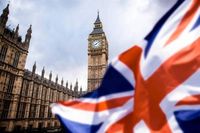In a time of economic recovery, the Bank of England is now facing significant challenges as troubling indicators emerge from the labor market. The latest data from the National Statistics Office reveals a concerning trend: a decline in job numbers during February and March, raising alarms about the potential impact of government financial measures on employment. This situation has intensified scrutiny on the central bank as it approaches key monetary policy decisions.
According to a report by the Financial Times, the number of jobs in the UK payrolls fell by 8,000 between January and February, a stark revision from earlier estimates that had suggested a gain of 21,000 jobs. The preliminary data for March, which is still pending confirmation, indicates a more severe drop of approximately 78,000 jobs, representing about 0.3% of the total workforce. This decline comes just as the increased national insurance contributions for employers are set to take effect, as outlined in the government’s October budget.
If these figures are confirmed, they would mark the largest job loss since May 2020, raising concerns about the resilience of the labor market in the face of rising costs and economic uncertainty. The Financial Times also noted that the number of job vacancies has decreased for the first time below pre-pandemic levels since early 2021, highlighting a significant shift in the employment landscape.
Ashley Webb, an economist at Capital Economics, commented on the implications of these figures, stating, "The new numbers provide initial evidence that businesses are beginning to respond to increased labor costs and the newly implemented minimum wage by reducing staff levels." This caution comes amid heightened concerns regarding global economic policies, particularly those from the United States, which may further complicate job growth in the UK.
As the Bank of England monitors these developments, it faces pressure to assess the impact of rising employer taxes and wage increases on inflation and economic growth. The bank is aware that higher taxes could compel companies to raise prices to offset costs, while wage increases might stimulate demand for goods and services, potentially complicating inflationary targets.
In a related context, the Guardian reported that despite the ongoing labor market slowdown, Treasury Secretary Rachel Reeves may find some comfort in the latest data, which does not yet indicate widespread job losses due to the new tax policies. The increase in national insurance contributions is expected to generate an additional £25 billion for the government, although it has drawn significant backlash from the business sector, with warnings about its potential impact on job opportunities.
While the current data does not suggest mass layoffs, the persistent slowdown in the labor market since last year reflects a broader economic decline, with fears that the high tax burden on employers may continue to suppress job demand in the coming months. The Guardian also highlighted the possibility of the UK reaching an agreement with the US regarding the 10% import tariff currently imposed on UK goods, which could alleviate some pressure on the economy.
As the Bank of England prepares for its next meeting in May, some experts, like Sanjay Raja from Deutsche Bank, believe the labor market data could provide a basis for the central bank to consider lowering interest rates, given the evident slowdown and ongoing trade uncertainties. The Financial Times emphasized that the British business sector is grappling with increasing uncertainty following the announcement of new tariffs by former President Donald Trump on imports from several countries, which poses fresh challenges for the UK economy.
With the prospect of additional interest rate cuts looming, the financial markets are closely watching the Bank of England's next moves, particularly as they pertain to stimulating growth amidst a backdrop of rising costs and global economic pressures. The central bank's decisions will be crucial in navigating the fine line between fostering economic recovery and managing inflationary pressures.
In light of these developments, the UK government is under pressure to balance fiscal measures with the realities of a changing job market. As the nation continues to grapple with the repercussions of global economic policies and domestic tax changes, the path forward remains uncertain. The interplay between government policy, business response, and labor market dynamics will undoubtedly shape the future of the UK economy in the coming months.
As the situation evolves, stakeholders across various sectors are left to ponder the implications of these economic trends. Will the Bank of England adjust its monetary policy in response to the labor market's decline? How will businesses adapt to the changing landscape of taxation and employment? These questions loom large as the UK navigates a complex economic recovery.





